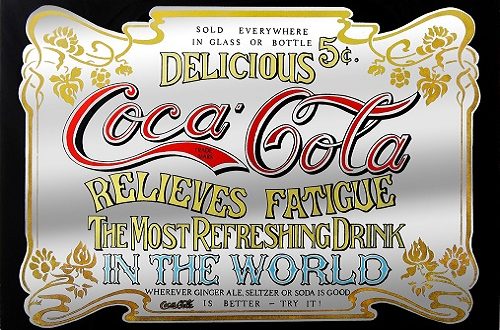Clear Branding is a key need for all businesses whatever their size, so what is Branding.
Branding – What is it?
This is an area where experts love to differ! It’s probably easier to define what you want from branding rather than to define exactly what it is, so here goes;
The aim of Branding is to evolve a clearly identifiable and positive presence in a market for your company, its products and services which both generates new customers as well as retaining existing ones.
How to achieve it
Branding is a key function of marketing, it goes much further than the logo. Crucially the aims for the brand need to be defined and then all business activities need to support it, this includes promotion, sales, services and logistics. The culture of the business is central to achieving a strong brand.
Strong Examples
It’s a topic where looking at examples can help. Coca-Cola as illustrated is considered one of the strongest brands in the world, but let’s look at some others.
John Lewis
Department stores have had a torrid time, John Lewis however seems to be riding the storm better than others. At the heart of John Lewis’s branding for decades is the clear statement “Never Knowingly Undersold.” This is backed up with their price matching strategy. Through this approach, customers know they are not going to be overcharged. John Lewis’s other strength is in service, whilst not always perfect, when it does go wrong they have a positive approach, even if it costs them, to come to an acceptable solution.
BMW and Mercedes Benz
Car buyers are image conscious, these two companies along with the more exotic manufacturers maintain strict control of their brand in the market. All literature, promotion, premises and staff adhere to corporate brand guidelines. Product design follows similar guidelines.
VW
Volkswagen is an interesting brand in that it crosses class divides, few brands succeed in doing this, VW cars are bought by the rich and not so rich alike. And of course, through their ownership of AUDI, Skoda, SEAT, Bentley and Porsche they reach more selective markets. Although technology is shared across their brands, they carefully maintain brand images for each of them.
Apple
Like VW, Apple crosses class boundaries. They follow their own clear strategy sometimes disrupting market norms. Their marketing is excellent, but their success is also down to good product design.
More Challenging Branding
This is where it’s not clear where a business operates, often because they attempt to reach too wider an audience.
Marks and Spencer (Clothing)
M and S is undoubtedly a strong brand in that we all know it, but in clothing they have lost their dominant position. Older readers will remember when most of their clothes were British, offering high quality at reasonable (not cheap) prices. Now there is less to differentiate them from competitors and by offering products across a broad market, their position can be confused and advertising challenging. To address this sub brands such as Autograph and Per Una have been introduced, but not adequately supported.
ASDA
Whilst they remain one of the largest retailers, they have been losing ground. Ironically, the ASDA strategy was price led, aiming mainly at budget conscious shoppers, the problem arose when discounters from Germany arrived will lower prices still. Now Walmart, their US owners seem willing to sell out to rival Sainsbury.
Citroen and DS
The mid-market of the car industry is crowded, branding as used effectively by the German manufacturers is one way of standing out. Citroen part of the giant Peugeot Citroen group has an illustrious history but for many years offered what was basically mass market Peugeot based models. The DS car range was introduced to compete at a higher level. Initially still branded as Citroens, since 2014 DS is being developed as a distinct up-market French car brand.
British Airways
Our flagship airline once rated among the world’s best, it has lost its shine. The same is true for many other national carriers. Budget airlines have eaten into the market, mainly in short haul but now challenging on longer distances. BA and others have responded by cutting the travel perks such as meals and drinks, thereby reducing their differentiation. To compound the problem, their higher cost structures make them unable to compete on price. BA wants to see itself as a premium brand justifying a higher price but more and more travellers question what you get for the extra.
Getting Started
Whatever the size of your business, you need to establish what your business offer, its principles and what your market is. Although I hate most mission statements, have a few bullet points describing your business will help. Once written down, ask yourself if they are true to what your business is today, or are what you aspire to. It’s always worth asking trusted colleagues for their opinions.
You may finish up with two lists, where your are today and where you want to take it. Once you are happy with these, you can start the process of developing your brand.
 B2B-Club Connecting SME's Nationwide
B2B-Club Connecting SME's Nationwide


